This article was originally published in the Vision Zero Cities Journal, released as part of Transportation Alternatives’ 2025 Vision Zero Cities conference, which will take place October 28-30 in New York City.
As cities worldwide face challenges in promoting cycling and electrification to tackle congestion and climate change, China is leading the way in integrating e-bikes into urban mobility through robust regulations and extensive infrastructure. With over 420 million e-bikes across the country and cities like Shanghai boasting an e-bike for every two residents, the sheer prevalence of e-bikes in China showcases the scale of this transformation.
China’s e-bike revolution traces back to the 1980s, when many cities banned two-wheeled motorcycles due to noise and safety issues. Manufacturers responded by electrifying pedal bikes, crafting them to resemble mopeds to meet riders’ demand for the ability to carry goods and transport multiple people. Therefore, e-bikes in China often resemble mopeds rather than electric-assisted pedal bikes, which are more common in Western countries.
According to China’s national standard, e-bikes are defined as “two-wheeled vehicles with electric drive and/or electric-assisted function, powered by onboard batteries.” This broad definition encompasses both throttle-driven models, which dominate the market, and pedal-assisted ones. On the other hand, electric mopeds and motorcycles also exist in China. They can be heavier with larger motors and higher battery voltages and are classified as motor vehicles, requiring licensing and registration.
Today, despite the variety and quantity of urban transport options, e-bikes still stand out for their affordability, convenience, and suitability for navigating urban congestion, outpacing crowded subways, unreliable buses, costly taxis, and slow pedal bikes.
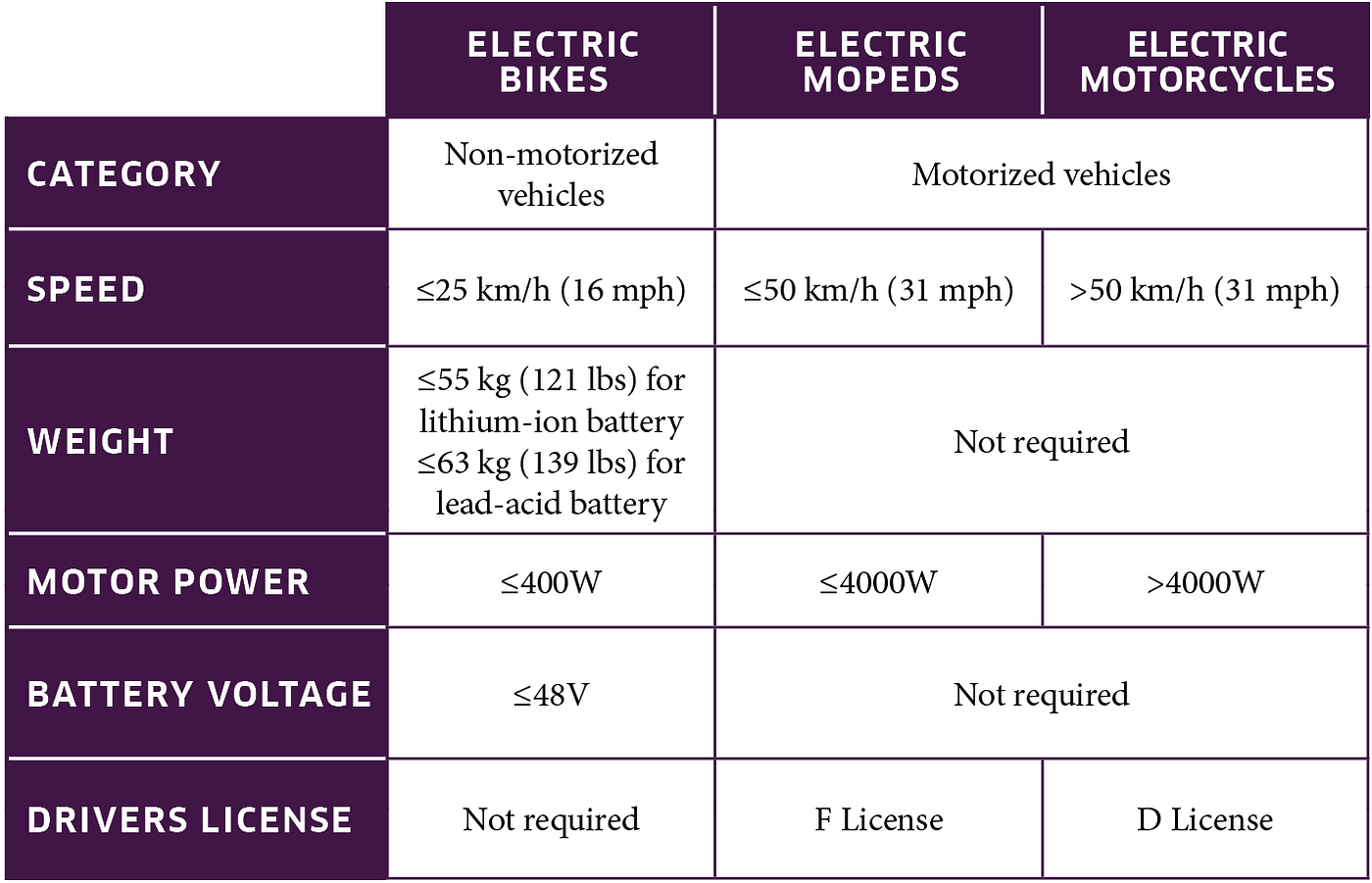
However, with such widespread use comes a pressing need to manage their impact, such as road safety, battery fires, and environmental sustainability. To tackle these challenges, China has rolled out an impressive system of continually updating regulations and infrastructure. From setting strict manufacturing standards to constructing dedicated bike lanes, the country has created a framework that keeps its e-bike boom in check.
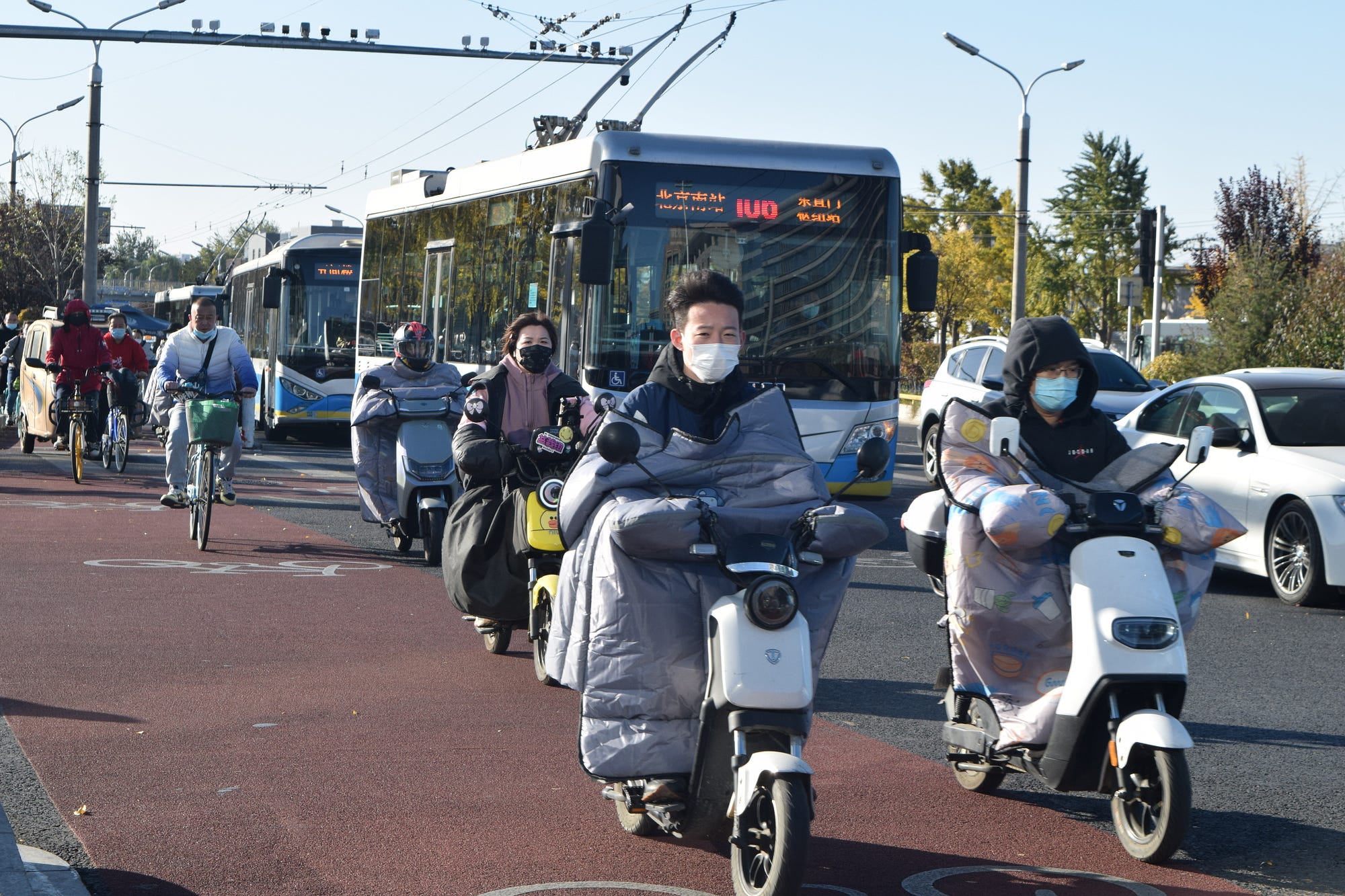
Imposing national product safety standards
China introduced its first national standard for e-bikes in 1999, shortly after large-scale production began.
This initial standard limited e-bikes to a maximum weight of 40 kg (88 lbs), a top speed of 20 km/h (12 mph), and motor power under 240W. As the market expanded and user needs evolved, most e-bikes began to exceed these limits. A revision was proposed in 2009 but stalled due to disagreements over whether heavier e-bikes should be classified as motor or non-motor vehicles. Amid increasing regulatory pressure, standardization efforts resumed in 2015. A new version of the standard was released in 2019, reaffirming e-bikes as non-motor vehicles and updating the limits to 55 kg (121 lbs) in weight, a top speed of 25 km/h (16 mph), and motor power under 400W.
Further updates at the end of 2024 aimed to address two urgent issues: crashes and fire hazards. The revised standards restricted plastic use to under 5.5 percent of a vehicle’s total mass to reduce flammability and imposed stricter controls on batteries, controllers, and speed limiters to prevent illegal modifications. The regulations also encouraged the integration of safety-enhancing technologies such as GPS, wireless communication, and real-time battery monitoring, enabling immediate alerts to riders when issues arise.
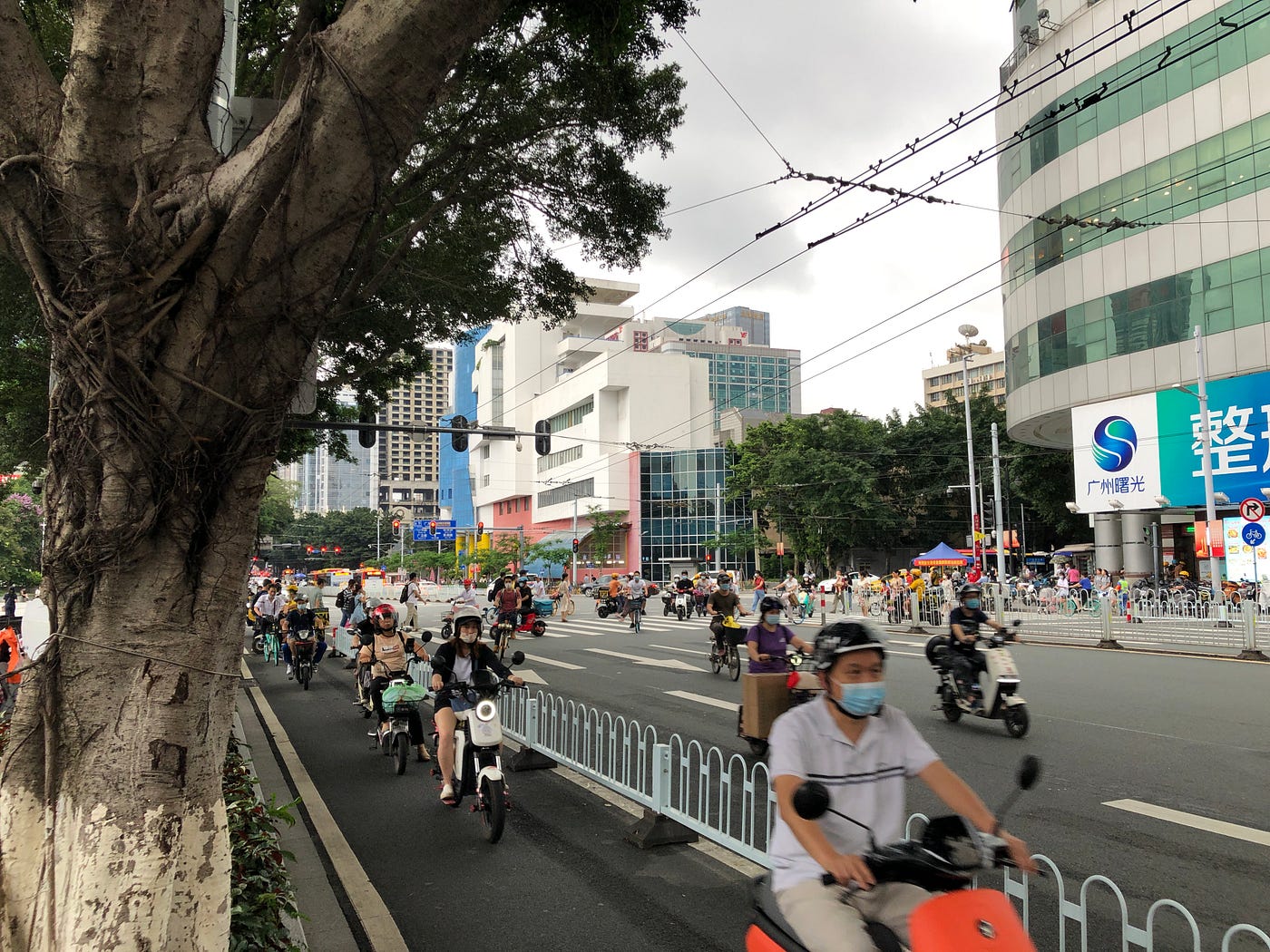
Beyond this national standard on E-Bike Safety Technical Specification, China has also issued a broader set of mandatory national standards and industrial guidelines to support the growing e-bike sector. These cover essential components, including vehicle design, batteries, chargers, helmets, and charging infrastructure.
Under China’s national policy, mandatory standards must be reviewed regularly — typically on a five-year cycle — to keep pace with technological advancements and maintain safety and quality across the board. E-bike-related standards follow this same updating cycle to ensure continued relevance and effectiveness.
Standardization offers multiple benefits. It enhances product quality during manufacturing, prevents substandard vehicles from entering the market, and accelerates the phasing-out of non-compliant models. It also streamlines law enforcement by providing a clear benchmark for identifying violations. Together, these efforts form a robust regulatory backbone that supports a safer, more efficient, and better-integrated e-bike ecosystem nationwide.
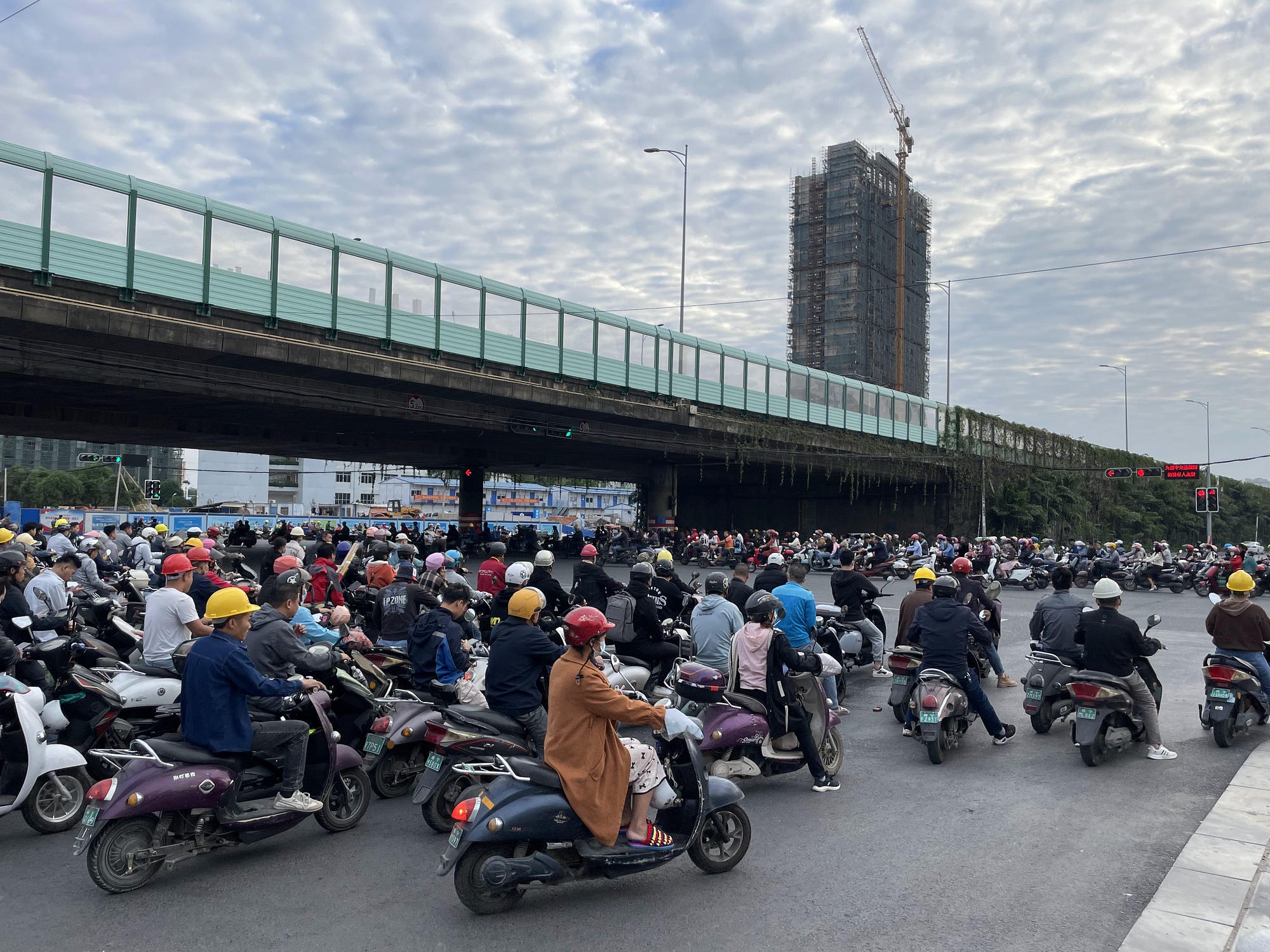
Prioritizing investment in cycling and charging infrastructure
Chinese cities are rapidly expanding their bike lane networks to accommodate the surge in both traditional bicycles and e-bikes. Guangzhou, home to over 19 million people and six million e-bikes, leads the charge, having renovated 968 km (600 miles) of bike lanes between 2021 and 2023.
The city is also developing its greenway system, with over 4,500 km (2,800 miles) of connected, protected cycling paths already built and a goal of reaching 6,000 km (3,700 miles) by the end of 2025. These greenways promote environmentally friendly mobility and reduce car dependency, making urban travel smoother and greener.
Beijing has taken bold steps with its first bicycle-only road, a 6.5 km (four-mile) car-free corridor opened in 2019 which links the densely populated Huilongguan community to the high-tech Shangdi district. Cyclists praise this route for its safety and comfort, as it minimizes conflicts with motor vehicles and eases traffic congestion.
In Nanning, where e-bike ownership is remarkably high — two e-bikes for every three residents — the city has built dedicated tunnels and overpasses for e-bikes and bicycles. These structures separate cyclists from pedestrians and motorized vehicles, significantly enhancing safety and traffic flow. While dedicated bike-only lanes are still emerging, these infrastructure upgrades create a safer and more enjoyable experience for millions of riders.
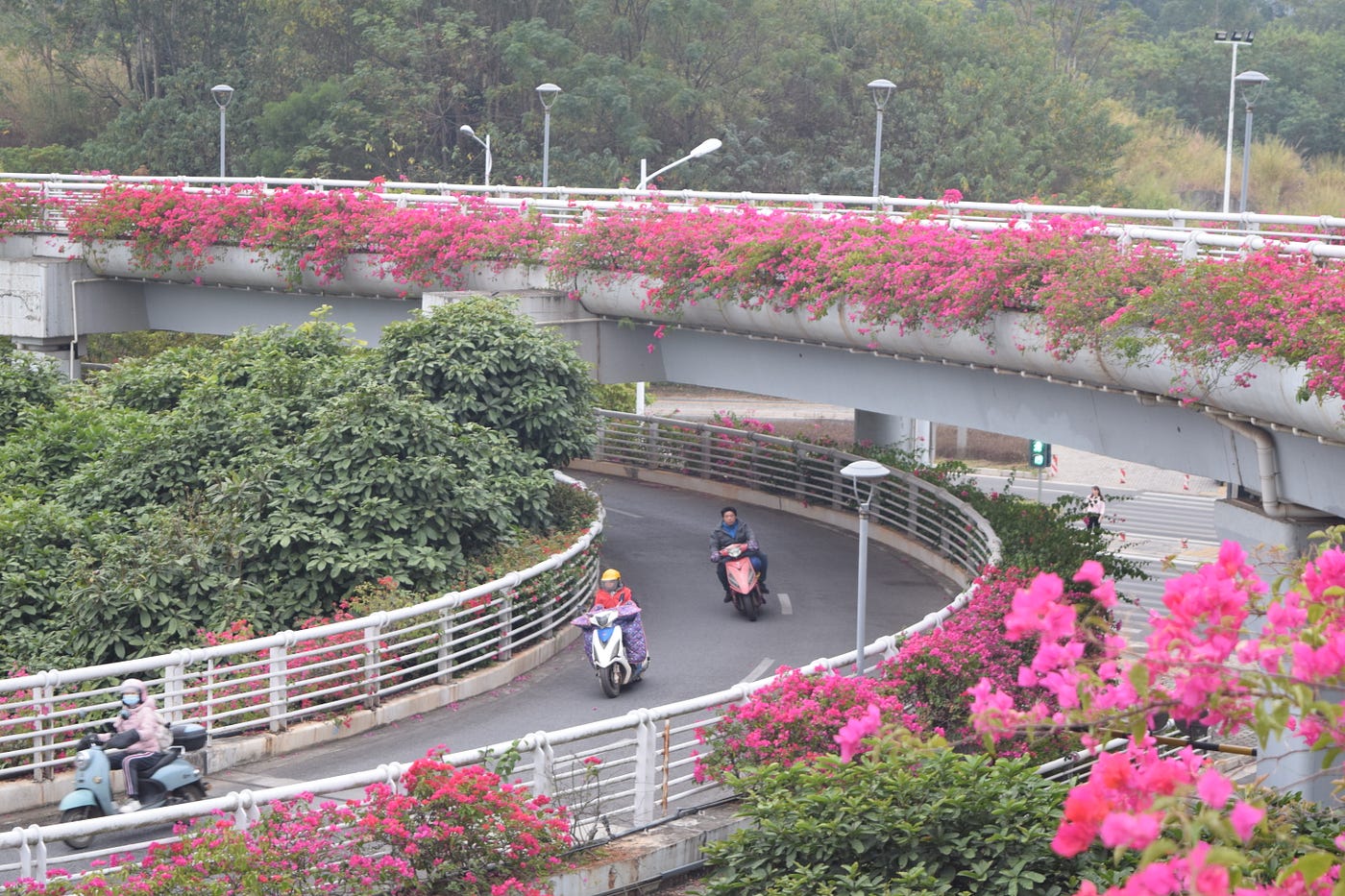
Apart from cycling infrastructure, charging infrastructure is also important. The widespread use of lithium-ion batteries in e-bikes, with the advantages of lightweight design and high energy density, has brought significant safety challenges compared with lead-acid alternatives. In 2023, there were over 21,000 e-bike-related fires in China due to battery failures, resulting in hundreds of fatalities. Most incidents occurred indoors, when owners brought their bikes inside to charge, highlighting the urgent need for safer alternatives.
To address these risks, Chinese cities are prioritizing affordable and accessible outdoor public charging infrastructure. To meet every e-bike rider’s need, cities have built three common types of public charging solutions: public charging piles, charging cabinets, and battery-swapping stations.
Charging piles offer accessible sockets, requiring users to bring their own chargers and cables. Charging cabinets, equipped with QR-code access, allow riders to pay a fee, place their battery inside, and charge securely. Battery-swapping stations, popular among delivery riders, use standardized batteries that users can purchase or rent, swapping depleted ones for fully charged packs in seconds.
These systems are fortified with advanced safety features, including battery management systems, remote monitoring, smoke detectors, and temperature safeguards, to prevent fires and other incidents. By expanding these affordable and accessible charging options, China is reducing fire hazards and ensuring e-bike users can power up safely and conveniently.
Shared e-bikes are also gaining popularity in many Chinese cities, offering a convenient and regulated alternative to private ownership. Managed centrally by operators, these systems could minimize risks associated with individual e-bikes by preventing unauthorized modifications, discouraging home charging, and ensuring regular maintenance. In 2024, over 300 cities rolled out shared e-bike programs, deploying more than 15 million vehicles.
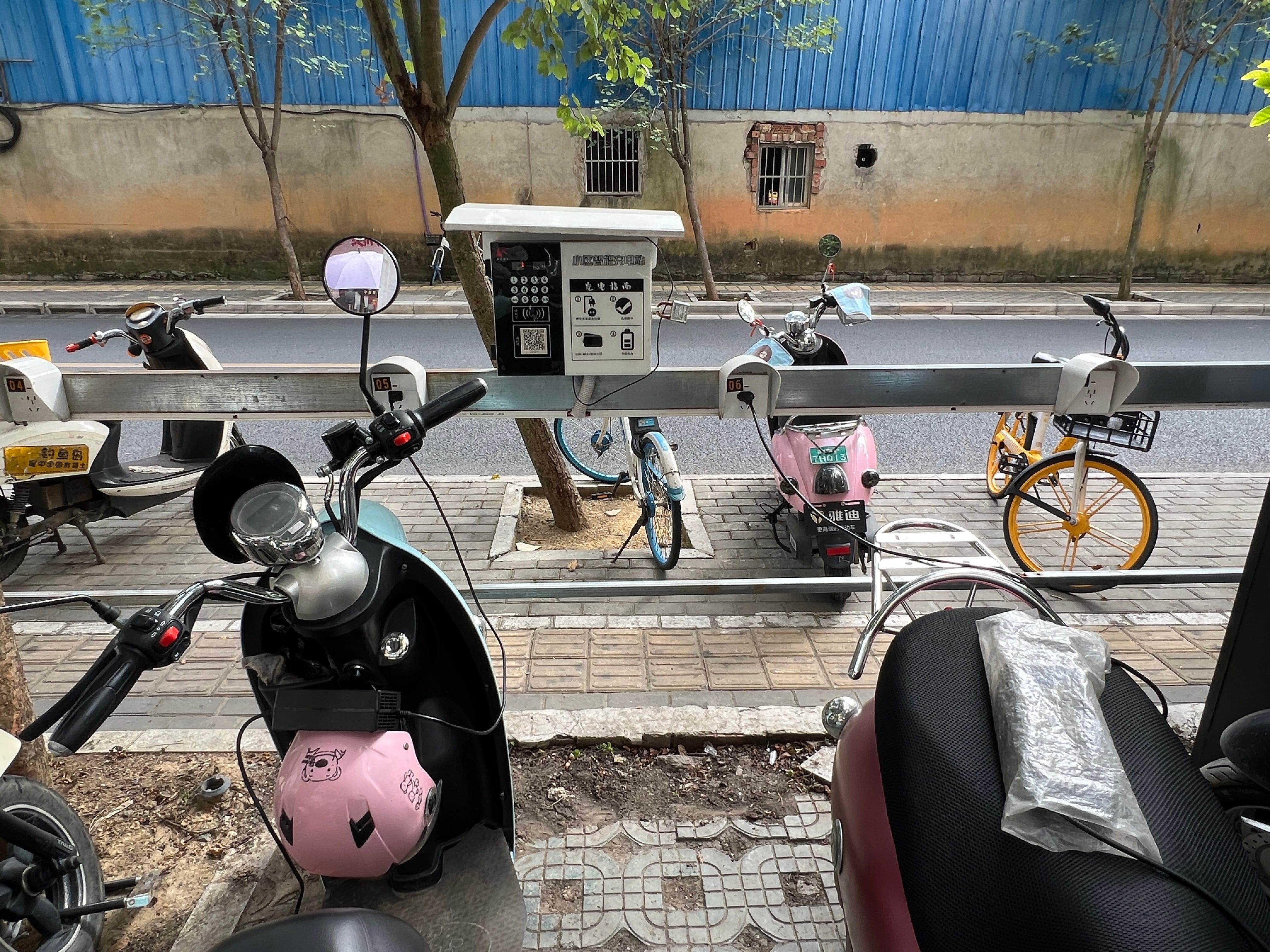

China’s management of over 420 million e-bikes presents a compelling blueprint for integrating electric two-wheelers into urban transportation systems worldwide. Through comprehensive national standards and substantial investments in cycling lanes and charging infrastructure, the country has significantly enhanced safety and accessibility for millions of riders.
To fully realize the benefits of this progress, the next step lies in stricter enforcement of existing regulations and broader public education. By aligning robust policy with effective implementation and engagement, China can not only consolidate its domestic achievements but also lead the global transition toward safer, greener urban mobility.






